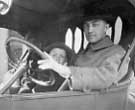 In the summer of '99 we did our first live interactive webcast. Bob Perelman, Shawn Walker, Kristen Gallagher and I gathered in the Arts Cafe of the Writers House and discussed William Carlos Williams' poem "To Elsie" for an hour and 35 minutes. Of course we made a recording of it, which is now available in RealVideo format, which is to say, can be played on any RealPlayer. (There are also excerpts in mp3 format.)
In the summer of '99 we did our first live interactive webcast. Bob Perelman, Shawn Walker, Kristen Gallagher and I gathered in the Arts Cafe of the Writers House and discussed William Carlos Williams' poem "To Elsie" for an hour and 35 minutes. Of course we made a recording of it, which is now available in RealVideo format, which is to say, can be played on any RealPlayer. (There are also excerpts in mp3 format.)We took questions from friends around the world who were watching the live stream and wrote in by email.
For those who have the time, I think the discussion is an excellent introduction to the aesthetic and also cultural-anthropological complexities of that poem, which was originally published in Spring and All in 1923. Here's the text.






 "I teach horizontally, meaning that while I might begin with a fixed idea of what I'm going to teach that day, I let it drift rhizomatically way off topic, often pulling it back when it gets too far. I rely on non-fixed materials to teach this way; the whole world is at my fingertips. Should I go off on a tangent about John and Rauschenberg and their love relationship as expressed in Rauschenberg's bed, an image of that bed is always a click away. From there, we can head anywhere into the non-fixed universe, be it film, text or sound. And of course, that always takes us elsewhere. As Cage says, 'We are getting nowhere fast.'"
"I teach horizontally, meaning that while I might begin with a fixed idea of what I'm going to teach that day, I let it drift rhizomatically way off topic, often pulling it back when it gets too far. I rely on non-fixed materials to teach this way; the whole world is at my fingertips. Should I go off on a tangent about John and Rauschenberg and their love relationship as expressed in Rauschenberg's bed, an image of that bed is always a click away. From there, we can head anywhere into the non-fixed universe, be it film, text or sound. And of course, that always takes us elsewhere. As Cage says, 'We are getting nowhere fast.'" 

 that anyone has yet got the imaginative measure of that terrifying day six years ago. Certainly our Tolstoy has not crawled out of the rubble. The closest we have, Don DeLillo, succeeded as an essayist-journalist ("In the Ruins of the Future: Reflections on Terror and Loss in the Shadow of September,” Harper’s, December 2001) but, to my mind, failed as a novelist ("Falling Man"). One reason, perhaps, is that the remembered emotion was instantly buried under a pile of cultural junk.' - Tod Gitlin in his review of Susan Faludi's The Terror Dream (written for
that anyone has yet got the imaginative measure of that terrifying day six years ago. Certainly our Tolstoy has not crawled out of the rubble. The closest we have, Don DeLillo, succeeded as an essayist-journalist ("In the Ruins of the Future: Reflections on Terror and Loss in the Shadow of September,” Harper’s, December 2001) but, to my mind, failed as a novelist ("Falling Man"). One reason, perhaps, is that the remembered emotion was instantly buried under a pile of cultural junk.' - Tod Gitlin in his review of Susan Faludi's The Terror Dream (written for 






























